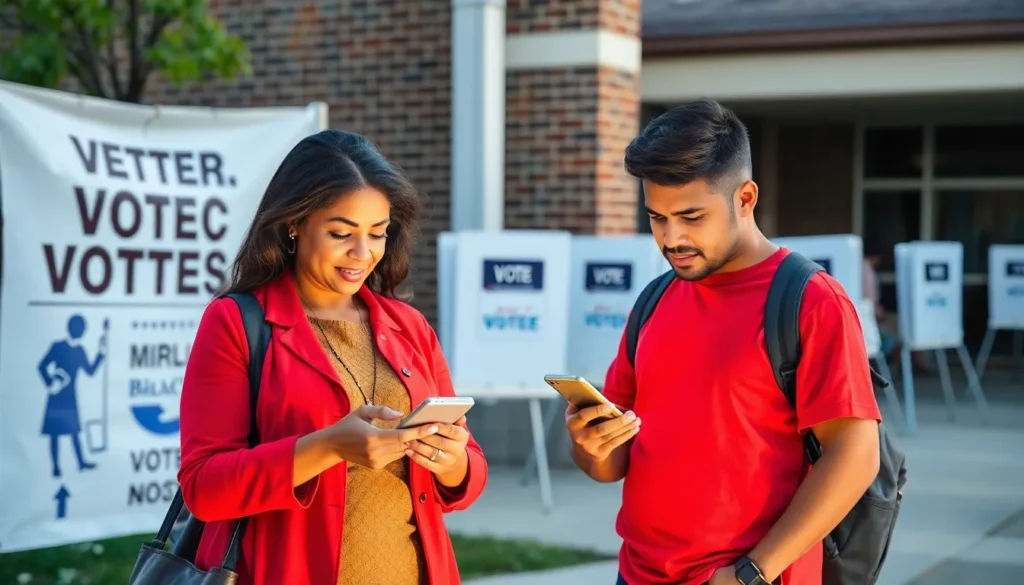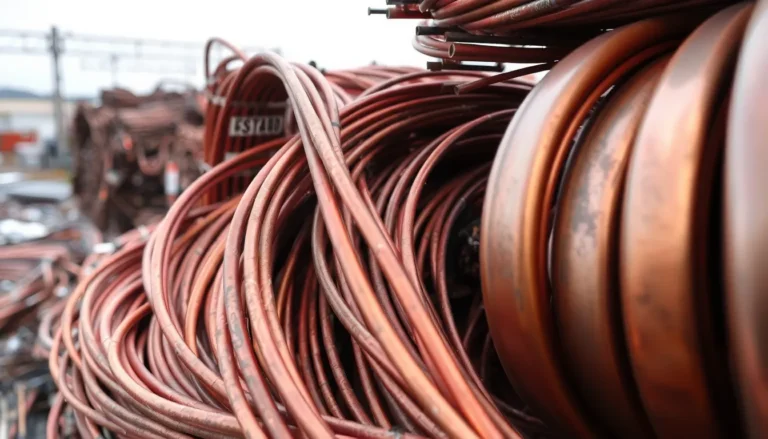As the 2024 United States presidential election looms closer, the excitement is palpable. Voters are gearing up to make their voices heard, but first comes the all-important task of finding the right polling station. It’s like a treasure hunt, but instead of gold doubloons, voters are after the chance to shape the nation’s future.
Table of Contents
ToggleOverview of Polling Stations
Polling stations serve as critical venues during the 2024 United States presidential election. They provide locations for voters to cast their ballots securely and efficiently. Accessing these stations requires knowledge of one’s designated site, as every voter is assigned a specific polling location based on residence.
States determine polling station hours, which typically range from early morning to evening. Many states offer early voting options at select polling places, allowing voters to avoid long lines on Election Day. Researching polling station addresses can streamline the voting process and reduce the likelihood of confusion.
Voters can locate polling stations online through state election websites, which often feature interactive maps. Alternatively, local election offices can assist with inquiries about polling station locations. Knowing the required identification needed for voting is crucial, as requirements vary by state.
Accessibility is another important aspect of polling stations. Many locations must comply with the Americans with Disabilities Act, ensuring that all voters can access the facilities. Additionally, polling places may offer language assistance for non-English speakers to better facilitate participation in the electoral process.
Understanding the polling station’s role and dynamics significantly contributes to effective voter turnout. It fosters informed decision-making, empowering individuals to participate fully in their democratic rights. Preparing for the visit to the polling station ensures that voters can engage confidently in the electoral process.
Importance of Polling Stations in Elections

Polling stations function as foundational components of the electoral process. These venues enable voters to express their democratic rights in a secure and orderly manner.
Accessibility for Voters
Accessibility plays a vital role at polling stations. Facilities must comply with the Americans with Disabilities Act, ensuring physical barriers are minimized. Voters with mobility challenges often find designated parking and pathways to assist their access. Language assistance is also essential for non-English speakers, allowing diverse communities to participate. States often provide resources and information, making it easier for each voter to understand their options.
Security Measures in Place
Security measures at polling stations ensure integrity and safety during elections. Surveillance systems and trained personnel monitor activities, deterring misconduct. Additionally, states implement procedures for managing voter identification and minimizing fraud risks. Poll workers receive training to address any issues that arise, providing a structured environment. Voters can feel secure that their votes will count and that their personal information remains protected throughout the election process.
Changes in Polling Stations for 2024
Changes in polling stations for the 2024 election aim to enhance voter convenience and accessibility.
New Locations and Technology
New polling locations reflect demographic shifts and improved accessibility. States prioritize placing polling stations in community centers and schools, ensuring voters can access them easily. Technology plays a crucial role in modern polling. Electronic voting machines and online voter check-in systems enhance efficiency at these sites. These advancements streamline processes and reduce wait times for voters. States also utilize geolocation services, allowing voters to confirm their assigned polling place via smartphone apps.
Impact of Early Voting
Early voting significantly impacts voter turnout. This option allows voters to cast ballots before Election Day, reducing congestion at polling stations. States extend early voting periods, offering flexibility for those with busy schedules. Accessibility is a key factor in early voting, enabling individuals to choose times that suit them best. Research shows early voters tend to be more informed and engaged, fostering participation in the electoral process. Additionally, this extra time can lessen the stress associated with last-minute voting.
Challenges Faced by Polling Stations
Polling stations encounter various challenges that can impact the electoral process. These challenges include issues related to voter turnout and staffing shortages.
Voter Turnout Issues
Low voter turnout often arises due to confusion about polling locations and hours. Many voters may not receive timely information about where to vote, leading to frustration on Election Day. Language barriers further complicate matters, especially for non-English speaking voters. Outreach efforts play a crucial role in addressing these barriers, as local election offices strive to increase awareness through community engagement. Research shows that informed voters are more likely to participate, highlighting the importance of proactive communication before elections. States are implementing initiatives aimed at simplifying the voting process, ensuring that more citizens can make their voices heard at the polls.
Staffing Shortages
Polling stations face significant staffing shortages during elections, which can lead to inadequate support for voters. Many poll workers volunteer their time, and fewer individuals are stepping forward to serve, causing challenges in managing the voting flow. Training and retention efforts are vital in maintaining a stable workforce. Recruitment drives often aim to attract younger volunteers, addressing the demographic gap among current poll workers. Insufficient staffing can result in long wait times, frustrating voters who expect a smooth experience. Effective management and planning are critical to ensuring enough personnel are present, allowing each voter to receive the assistance they need while safeguarding the electoral process’s integrity.
The 2024 United States presidential election promises to be a pivotal moment for voters. Understanding polling stations is essential for a seamless voting experience. With enhanced accessibility measures and technological advancements, voters can expect a more convenient process.
Active participation in the electoral process not only empowers individuals but also shapes the nation’s future. By knowing where and when to vote, citizens can confidently engage in democracy. As Election Day approaches, staying informed about polling locations and available resources will be crucial for maximizing voter turnout and ensuring every voice is heard.




